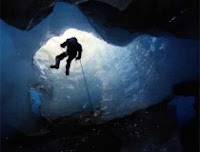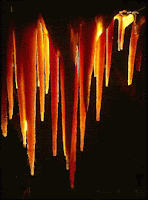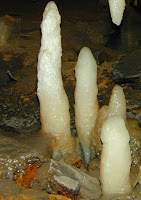CAVING: Basic Lesson
 |
| Caving Indonesia |
Speleology is the study of caves. Taken from the Greek words spelation = cave and logos = science. But I can not stand alone, but there is a natural structure that surrounds. So Speleology can be defined as the study of the cave and its environments.
1. According ius (international union of speology) based in Vienna, Austria. The cave is any room in the basement, which can enter the
2. According to Dr. r. K. T. Ko (chairman hikespi, 1985). The cave is an underground river path are still flowing (especially local limestone)
Cave has a characteristic in regulating the temperature inside, which is when the hot air outside, the air inside the cave will feel cool, and vice versa,
Trait causing a cave used for shelter. Caves in Indonesia mostly limestone / karts.
Knowledge About Caves
According to the process of formation, cave can be divided into three types, namely:
- Lava caves, the caves were formed due to volcanic activity of the volcano. When the eruption, which spewed lava flowing down to form grooves lengthwise. When the top / surface of lava would have frozen, Laca which still continues to flow beneath the surface, causing cavities or hallway.
- Littoral caves, the caves were formed cliffs coastal areas, due to erosion by wind and waves.
- Limestone caves or Limenstone, the cave is happening in the local limestone / limenstone, a result of the erosion of water on limestone rocks in the ground. Limestone cave that is the object of the search and exploitation for nature lovers or research inexhaustible by scientists. This is because many residential areas or zones limestone structure, so the caves are nearby, however has a positive or negative effect for people who live in the area.
Occurrence Process Limestone Caves
Limestone formed from calcium carbonate insoluble by water. But rainwater containing carbon dioxide (the absorption of air and soil) can dissolve it. Limestone has the typical characteristics of many cracks horizontally and vertically. And when the rain water into the hole, so that the dissolution occurs cracks / fissures are increasingly growing.
All the above activities take place in the underground layers of limestone, called seturasi zone, a zone under the free water level (water table), seturasi means the area is saturated with water. While the surface of the water table is the boundary of the zone seturasi.
Dilution activity progressively enlarged, causing a vertical or horizontal hallway even room all filled with water, and in some places they meet each other to form a network. At one time, the water table drops due to the motion of the earth, so the hallways into the caves dry (dry caves), where there is still water / flow. In some places a pond or underground river.
Following
the steps above, earth movement and erosion occurs conducted
underground water and the rain water through cracks in the walls of the
cave, alter the shape and structure of the cave. Then some of the typical form of the cave began to occur, such as:
Stalactites
 |
| Stalactites |
Which set up a cave ornaments spearhead elongated and tapering down, stick to the roof of the cave. This happens because the water containing high soluble drip through a small point on the roof of the cave. Before
the drop of water, evaporation so that the solution of lime contained
in it sticks to the roof of the cave and this process runs continuously
until a shape that resembles a small pipe with a straw hole. At
a certain stage of blockage in the holes so that water no longer flows
through the pipe, but again seeping through the base of the pipe and
past the outside of the pipe to end of pipe and drip back down. Finally,
the outside of the area of the base of the pipe pile a lot of lime
solution or in patches, causing bentukkan kerucuk resembling inverted
(stalactites).
 |
| Stalagmite |
Stalagmite
Stalactites formed from the process. As
the water dripped onto the floor caves, water evaporation, the solution
arises lime buildup set up a cone elongated and tapering to the top.Stalactite and stalagmite which ultimately fused, resembling a pillar / pole called the Column.
Drapery, the process is similar to stalactites, only perembesannya
occurs in a slit (crack) that extends to the roof of the cave, so the
blunt shape that resembles the curtains like a pair of curtains hanging
on the roof downwards with a curve-curve.
Flowstone,
occurs because of the accumulation of lime solution on the horizontal
slit lengthwise on cave walls, thus forming a half-sphere-shaped mound
surface / outer layer such as running water
Gourdam (dam), shaped like a small pond and connect with each other to form a network of just mashing the rice fields. Occurs
because the surface of the cave floor is not flat, so at some point the
dissolved limestone water flows into the bottom of the cave was blocked
and formed in accordance with the groove walls floor and hold it
happened repeatedly.
Helektite,
which is odd because it forms stalactites can be branched or parallel
to the caves, sometimes not even the growth downwards but upwards
towards the roof as against the force of gravity (gravity).
There are several theories about the formation helektite appear as follows:
- At a certain air pressure into horizontal growth direction.
- Wind makes no vertical growth down.
- There are some specific molecules or bacteria that affect growth.
Description:
CAVING: Basic Lesson
Rating:
3.5
Reviewer:
Unknown -
ItemReviewed:
CAVING: Basic Lesson




